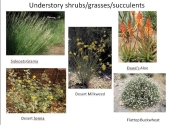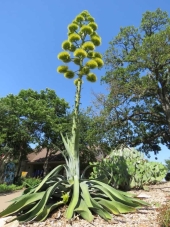
 12
12




Passionate advocate for living at a human scale and pace.
Help me grow the permaculture presence in Indiana https://permies.com/t/243107
Concise Guide to Permies' Publishing Standards: https://permies.com/wiki/220744
 9
9




No man is an island.
 2
2




Tim Siemens wrote:We have one section of our lawn that is not mowed during a portion of the summer to allow the plantain to go to seed. I like to eat the seeds fresh off the plant and also use the leaves to treat skin irritations and wasp bites.
Passionate advocate for living at a human scale and pace.
Help me grow the permaculture presence in Indiana https://permies.com/t/243107
Concise Guide to Permies' Publishing Standards: https://permies.com/wiki/220744
 9
9




Invasive plants are Earth's way of insisting we notice her medicines. Stephen Herrod Buhner
Everyone learns what works by learning what doesn't work. Stephen Herrod Buhner
 5
5




I'm only 65! That's not to old to learn to be a permie, right?
 6
6




 7
7




 7
7




 2
2




 6
6




 5
5




 8
8




With blessings, always
 6
6






 4
4




 4
4




Barbara Simoes wrote:I had loads of plantain growing throughout the lawn on my one acre. I know some of my friends and neighbors curse the stuff, but I never minded it. Then, I learned of all its benefits. I harvested some leaves to make a batch of salve, and it worked better than I dared hope to heal sores that had been present on my arms for way too long. It even seemed to make a dent on some scarring. Last year, I went out to harvest some for another batch of salve and there just wasn't enough. I'm thinking that it was because it was so rainy and wet. Both plantain and purslane seem to thrive where it is arid. I'm hoping that this year is better ie: not rain every single day for months on end! It rained last night! February in Vermont--go figure. I keep telling myself, had it been snow, I'd be shoveling right now.
The purslane grows in my vegetable garden, and I let it be. When I'm out there, I'll snack on it. It is so low growing, that it's not disturbing anything. Same with plantain. I've never worried too much about the lawn area which is very much a polyculture! I actually bought white clover seed and sprinkled it about. There had been some but not enough, and being it is a nitrogen fixer, it adds health and vigor to all the plants in my lawn and it is very green.
Passionate advocate for living at a human scale and pace.
Help me grow the permaculture presence in Indiana https://permies.com/t/243107
Concise Guide to Permies' Publishing Standards: https://permies.com/wiki/220744
 5
5




 10
10




 5
5




Forever creating a permaculture paradise!
 5
5




 2
2




 1
1




Jim Garlits wrote:I'm from the Midwest, and something I've noticed since I was a child was the purslane growing up through every available sidewalk crack, and the broad-leafed and the seedheads atop their thin stems. The purslane was easily noticeable because if you stepped on it, it was slick, like any succulent. The plantain was fun to run through and watch the seedheads scatter when you kicked them with your Chuck Taylors.
We often don't find out until later in life that these ubiquitous "weeds" are actually superfoods. More nutritious than most of the things we grow in the garden. So my question is...
Does anyone actually dedicate bed space to these guys in the garden? What are your strategies? And how prolific are they?
j
"Also, just as you want men to do to you, do the same way to them" (Luke 6:31)






 2
2




"Also, just as you want men to do to you, do the same way to them" (Luke 6:31)
 2
2




 1
1




gardener, homesteader
 1
1




Barbara Simoes wrote: Both plantain and purslane seem to thrive where it is arid.
 2
2




 1
1




Barbara Simoes wrote:Jim, I don't know whether or not you've ever made salve, but there is nothing easier! Olive oil and beeswax plus whatever you're steeping in the olive oil! I've tried other oils, but they seemingly go rancid fairly quickly. Check out "Practical Self Reliance" and search for plantain salve. Her instructions are so clear and easy to follow. I've also made dandelion wine from her site that is delicious!
Passionate advocate for living at a human scale and pace.
Help me grow the permaculture presence in Indiana https://permies.com/t/243107
Concise Guide to Permies' Publishing Standards: https://permies.com/wiki/220744
 1
1




Donn Cave wrote:I bought some commercial purslane seed, and was not real happy with the results. The plants grew surprisingly tall - over a foot tall, maybe more (in full sun), with great fat stems, and the taste was nothing special. The Portuguese regard it as a soup ingredient.
Passionate advocate for living at a human scale and pace.
Help me grow the permaculture presence in Indiana https://permies.com/t/243107
Concise Guide to Permies' Publishing Standards: https://permies.com/wiki/220744
 1
1




Passionate advocate for living at a human scale and pace.
Help me grow the permaculture presence in Indiana https://permies.com/t/243107
Concise Guide to Permies' Publishing Standards: https://permies.com/wiki/220744

 3
3




Barbara Simoes wrote:Jim, I don't know whether or not you've ever made salve, but there is nothing easier! Olive oil and beeswax plus whatever you're steeping in the olive oil! I've tried other oils, but they seemingly go rancid fairly quickly. Check out "Practical Self Reliance" and search for plantain salve. Her instructions are so clear and easy to follow. I've also made dandelion wine from her site that is delicious!
I choose...to be the best me I can be, to be the strongest me I can be, to learn the most I can. I don't know what comes next. But I'm gonna go into it balls to the walls, flames in my hair, and full speed ahead.
 3
3




 3
3




Still slingin’ Avacado pits
 3
3




Alina Green wrote:Has anyone used the seeds of plantain like psyllium, for fiber and/or laxative properties?
If so, which species did you use, and what do you do--just rub the seeds off and consume as is?

 1
1




Alina Green wrote:Has anyone used the seeds of plantain like psyllium, for fiber and/or laxative properties?
If so, which species did you use, and what do you do--just rub the seeds off and consume as is?
 5
5




Eino Kenttä wrote:... I'd grind the seeds and use them the same as psyllium. However, they are very hard, so don't know a practical method for grinding. They are a bit too tiny for a mortar and pestle to work well.

 2
2




- Tim's Homestead Journal - Purchase a copy of Building a Better World in Your Backyard - Purchase 6 Decks of Permaculture Cards -
- Purchase 12x Decks of Permaculture Cards - Purchase a copy of the SKIP Book - Purchase 12x copies of Building a Better World in your Backyard
 1
1




Eino Kenttä wrote:I think if I wanted to use it in cooking or gluten-free baking, I'd grind the seeds and use them the same as psyllium.
 4
4




Best serotonin-booster ever: garden time.
 5
5





|
Or we might never have existed at all. Freaky. So we should cherish everything. Even this tiny ad:
Rocket Mass Heater Plans: Annex 6
https://permies.com/wiki/138231/Rocket-Mass-Heater-Plans-Annex
|





